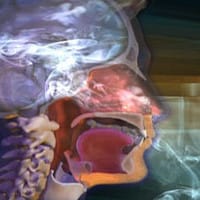Every day it seems we hear something about a dangerous new designer drug that young people have been experimenting with at raves, on college campuses, parties, or at various places where adolescents gather. But one of the newest drug fads sweeping the nation involves the oldest and most familiar of all intoxicating substances. Not satisfied with the delayed high that can be achieved by drinking alcohol to excess, young people have turned to vaporizing hard liquor so it can be inhaled through the nose or the mouth. When consumed as vapor, alcohol bypasses the body’s digestive system and is absorbed directly into the bloodstream, passing through the lungs briefly before moving quickly on to the brain. Because it circulates freely and is not subject to dilution, inhaled alcohol fumes are able to deliver their mind-altering kick immediately, leaving the user feeling instantly intoxicated for 30 to 40 minutes. There is no hangover once the initial buzz wears off, and many young people who enjoy the high they get from inhaling alcohol will repeat the process over and over again, believing they have found the perfect way to get drunk without having to face any real consequences for their actions. Alcohol can be vaporized and inhaled by pouring it over dry ice, or it can be heated and converted to gaseous form in a special device called a Vaportini, which was invented by a Chicago club owner and is now legally available for purchase over the Internet at a cost of about $35. Approximately 10 years ago, a similar apparatus called Alcohol Without Liquid, or AWOL, was introduced to the marketplace, but its cost is significantly higher than the Vaportini and it was eventually banned in about half of the states. It is still available in many places, but the Vaportini seems destined to far eclipse it in overall sales, and the low cost and growing popularity of this ingenious but devilish device will undoubtedly help fuel the bonfires of the alcohol inhalation craze.
A Ticket to Doomsday
From the standpoint of the alcohol enthusiast, imbibing through inhalation has many advantages. First, because the alcohol is not metabolized before absorption, its effects are immediate and stronger than they would have been if consumed in the normal liquid form. The lack of a hangover with vaporized alcohol is another draw, and because its effects wear off quickly, a person could spend an entire evening getting wasted but still be capable of driving himself home at the end of the night. Additionally, when alcohol enters the bloodstream directly, its calories are not absorbed by the body, meaning it will not cause weight gain no matter how much is consumed. For teenagers who want to abuse alcohol, having the ability to binge “drink” all night and go home completely sober, parents are none the wiser. Finally, there is no vomiting with inhaled alcohol, making it possible for a person to binge on liquor without suffering from this most unpleasant potential side effect. But the reason alcohol usually has such toxic side effects is because it is indeed a toxin, and for its own protection the body needs to break it down and flush it away before it has the chance to do too much damage. When alcohol is inhaled, however, the body’s defenses against it are rendered null and void, leaving it free to attack the delicate cells and tissues of the lungs and brain. No one knows for sure how destructive this chemical inhalant might ultimately be, but the consequences of un-metabolized alcohol could be especially devastating for adolescents whose brains are still passing through a delicate developmental stage. The body’s normal way of reacting to alcohol may seem unpleasant, but it is necessary to prevent sensitive systems from being poisoned by a reactive and caustic substance. Even beyond its likely negative health effects, which for the most part we can only speculate about because this practice is still so new, alcohol inhalation unquestionably provides a shortcut to addiction. We know that inhaling the smoke from crack cocaine dramatically boosted the addictive qualities of that drug, and vaporized alcohol when inhaled follows the same direct pathway from respiratory tract to bloodstream. And because it is possible to take several hits from a Vaportini or similar device in a brief period of time, vapor consumers will be able to flood their bodies with significant amounts of alcohol quite rapidly, which will foster rapid dependency while also increasing the risk of alcohol overdose. No matter how the body absorbs it, there is no disputing that alcohol is a highly addictive substance, and any practice that makes its consumption easier while enhancing its intoxicating effects could eventually cause alcoholism to rage out of control like a wildfire.
It’s a Fad, and It’s Bad
The most troubling aspect of this newest drug fad (and a “drug fad” is what it is, let’s label it correctly) is that at this stage we simply don’t have enough information available to establish conclusively what its health effects will ultimately turn out to be. But given the potency of the product that is consumed, it is reasonable to conclude that inhaling alcohol will encourage addiction, send more young people to emergency rooms (and morgues) suffering from acute alcohol poisoning, and cause brain damage and perhaps lung damage in people who become hard-core inhalers. And because young people tend to see alcohol consumption as safer than the use of illegal drugs, it may be quite difficult to get them to understand just how risky alcohol inhalation really is. The parallels between crack cocaine and inhaled alcohol are especially alarming, and we can only hope that this activity does not fuel a devastating epidemic of addiction the way crack consumption did back in the 1980s.

